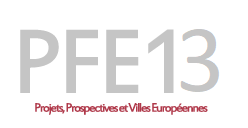What Is an Information Portal?
An information portal acts as a centralized online platform designed to aggregate, organize, and deliver digital resources to users. It serves as a single access point for diverse data, tools, and services, streamlining interactions between individuals and organizations. Whether for business operations or public services, these portals enhance efficiency by reducing the need to navigate multiple systems.
Key Features of Modern Information Portals
Modern information portals prioritize user experience through intuitive interfaces, personalized dashboards, and seamless integration of external data sources. Key features include real-time updates, role-based access control, and advanced search functionalities. These elements ensure data accessibility for all stakeholders while maintaining security and scalability.
How Information Portals Enhance User Experience
By consolidating digital resources into one online platform, information portals reduce cognitive load and decision-making time for users. Customizable layouts, interactive widgets, and contextual recommendations improve engagement. Prioritizing user experience ensures that portals adapt to evolving needs, fostering long-term adoption and satisfaction.
Common Use Cases for Information Portals
- Enterprise portals for internal communication and resource management
- Public sector portals providing citizens with government services and data
- Educational institutions using portals to share course materials and research
Benefits of Implementing an Information Portal
Implementing an information portal offers significant advantages, including streamlined workflows, improved collaboration, and enhanced data accessibility. Organizations can reduce operational costs and increase productivity by centralizing digital resources. For instance, https://luckytiger.org/ demonstrates how such platforms optimize service delivery for users.
Challenges in Developing an Effective Portal
Developing a robust information portal requires overcoming technical hurdles like system integration, data migration, and ensuring cross-platform compatibility. Maintaining high standards of user experience while balancing security and performance demands careful planning and continuous feedback loops.
Best Practices for Designing an Information Portal
Designing an effective information portal involves focusing on data accessibility through clear navigation, mobile responsiveness, and multilingual support. Incorporating analytics tools helps track user behavior, enabling iterative improvements. Always align the portal’s features with the specific needs of its target audience.
The Role of Data Security in Information Portals
Data security is critical for information portals handling sensitive digital resources. Encryption, multi-factor authentication, and regular audits protect against breaches. Ensuring compliance with regulations like GDPR reinforces trust and safeguards user privacy within the online platform.
Trends Shaping the Future of Information Portals
Emerging trends like AI-driven personalization, blockchain for data integrity, and cloud-based infrastructure are redefining information portals. These advancements enhance user experience and data accessibility, making portals more adaptive and secure for future challenges.
How to Choose the Right Information Portal for Your Needs
Selecting the ideal information portal depends on factors like scalability, cost, and alignment with organizational goals. Evaluate vendors based on their ability to integrate with existing systems, support digital resources, and ensure a seamless user experience across devices.
Case Studies: Real-World Applications of Information Portals
- A healthcare provider using a portal to unify patient records and streamline appointments
- A university portal offering students access to courses, grades, and research databases
- A city government portal providing residents with tax filings and public service updates
The Impact of AI on Information Portal Development
AI enhances information portals by automating data analysis, personalizing content, and improving data accessibility. Machine learning algorithms predict user needs, while chatbots offer instant support, elevating the user experience on online platforms.
Accessibility Standards for Information Portals
Compliance with WCAG guidelines ensures information portals are accessible to users with disabilities. Features like screen reader compatibility, alt text for images, and keyboard navigation uphold inclusivity and expand the reach of digital resources.
Measuring Success in Information Portal Projects
Success metrics for information portals include user engagement rates, reduction in support requests, and increased usage of digital resources. Regular performance reviews and A/B testing help refine the user experience and ensure alignment with strategic objectives.
Frequently Asked Questions About Information Portals
- What makes an information portal different from a website? An information portal integrates multiple services and data sources, offering a unified online platform for users.
- How do information portals improve data accessibility? They consolidate resources into one location, reducing search time and enhancing usability.
- Can small businesses benefit from information portals? Yes, by centralizing operations and improving user experience, they can scale efficiently.

COMMENTAIRES